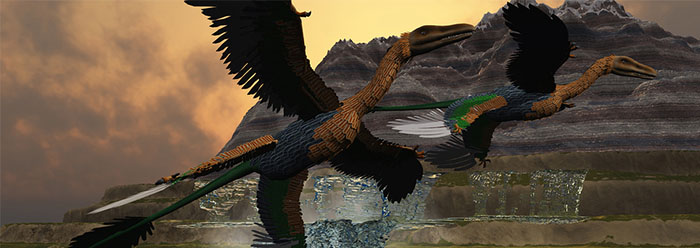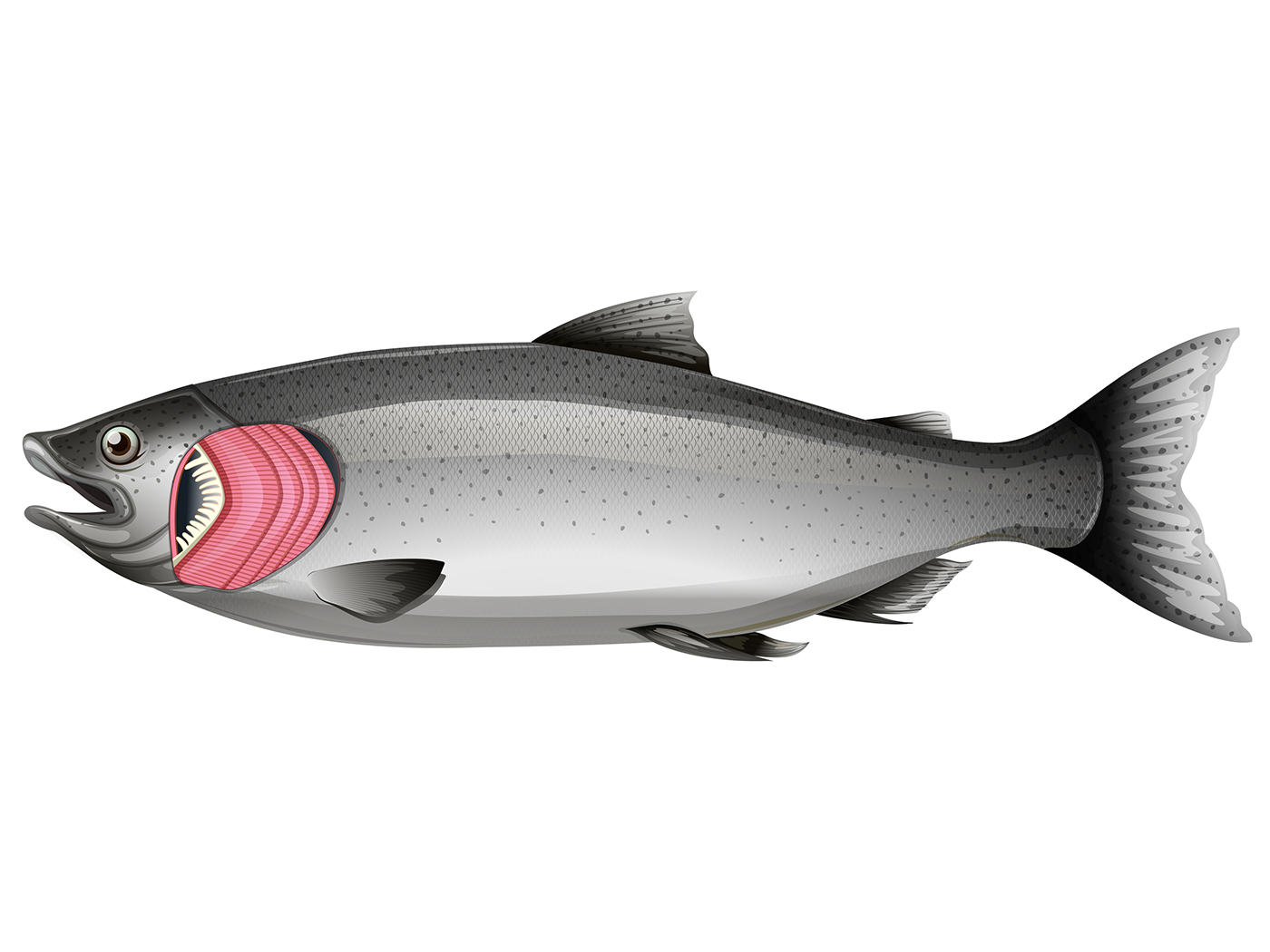A recently discovered Microraptor fossil reveals an odd-looking bird with two front wings and feathers on its back legs, giving it the appearance of having "four wings." The startling fossil reflects some of evolution's unsolved mysteries, like the origins of flight, wings, and feathers. Could Microraptor help answer these questions?
Nature Communications published a new Microraptor study that assumes modern bird wings evolved from gliding wings. This despite the fact that this ancient bird had asymmetrical feathers on both its front and hind limbs—feathers like modern flying birds.1 Tangible evidence points to a very different conclusion than evolution from gliding wings.2
The study authors wrote, "Symmetric 'flight' feathers first evolved in dinosaurs for non-aerodynamic functions, later being adapted to form lifting surfaces."1 But did data or belief in evolution back this assertion?
In their research, they created a scale model of the 30-inch-long Microraptor and tested its flight performance in a wind tunnel.
The authors claimed that Microraptor could glide exceptionally well and could have glided close to 315 feet if it started from a height of 100 feet. However, their model bird was rigid, and they left out critical tests for true wing-powered flight.1
While this unusual bird was first described from specimens found in rocks supposedly 130 million years old, it had asymmetrical feathers—as do modern flying and gliding birds—on both its front and hind limbs.3,4 Today, symmetrical feathers, not used to create an aerofoil, are still found on flightless birds like the ostrich.
Evolutionists have long struggled to explain the sudden appearance of a myriad of features, including symmetrical flight feathers. The best story it offers is that over millions of years, dinosaurs' scales somehow grew into symmetrical gliding feathers that then evolved into asymmetrical flying feathers.1,3 However, this view is so lacking in scientific substance that even other evolutionists disagree with it.5
Creation scientists reference the Word of God that tells us all birds were created fully-formed on Day Five of the creation week—only 6,000 years ago. Birds with symmetrical feathers, like the ostrich, were created on Day Five and were never intended to fly. Birds like the Microraptor would have been created on that same day, only with asymmetrical wings giving them the ability to fly.6 There is no fossil evidence of symmetrical feathers evolving into asymmetrical feathers.
Although the new study claims to provide insight into "the evolution of feathered flight," like other claims of dinosaur-to-bird evolution, its promise doesn't fly.2 The elegant and precise flight-specialized feathers of the Microraptor reflect intentional design.
Reference
- Dyke, G. et al. 2013. Aerodynamic performance of the feathered dinosaur Microraptor and the evolution of feathered flight. Nature Communications. 4 (2489).
- Thomas, B. 2013. Were There Really Feathered Dinosaurs? In Morris III, H. et al., Creation Basics and Beyond. Dallas, Texas: Institute for Creation Research.
- Xu, X. et al. 2003. Four-winged dinosaurs from China. Nature. 421 (6921): 335-340.
- Li, Q. et al. 2012. Reconstruction of Microraptor and the evolution of iridescent plumage. Science. 335 (6073): 1215-1219.
- For example, evolutionist Alan Feduccia once wrote, "The major, and most worrying, problem of the feathered dinosaur hypothesis is that the integumental structures have been homologized with avian feathers on the basis of anatomically and paleontologically unsound and misleading information." See Feduccia, A. T. et al. 2005. Do Feathered Dinosaurs Exist? Testing the Hypothesis on Neontological and Paleontological Evidence. Journal of Morphology. 266: 134.
- Thomas, B. Is New Fossil a Bird-Eating Dinosaur? Creation Science Update. Posted on icr.org December 7, 2011, accessed October 3, 2013.
* Dr. Clarey is Research Associate at the Institute for Creation Research and received his Ph.D. in geology from Western Michigan University.
Article posted on October 7, 2013.




















